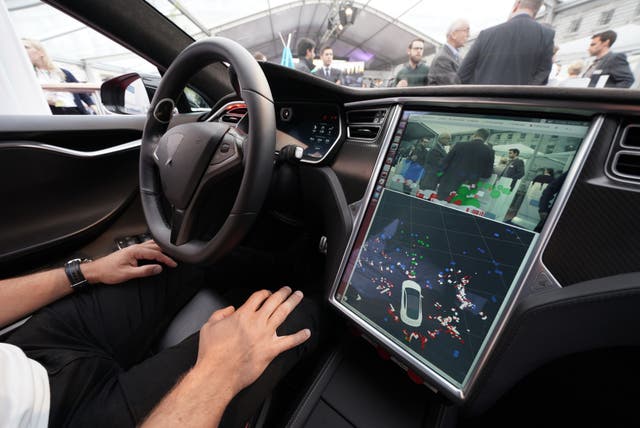
Using a driverless car may make you less competetent behind the wheel, new research suggests.
A study was carried out at the University of Nottingham earlier this year into “conditional automation” cars capable of self-driving on motorways and in traffic jams, expected to be available on the UK market in the next few years.
The research involved 49 drivers of different ages and genders driving a simulator for half an hour every day for five days.
Participants would begin by driving manually but when the simulation reached a stretch of dual carriageway they were given the chance to hand over control to the car itself.
After around 20 minutes, they were told they needed to manually drive the car again and would get a 60-second “prepare to drive” notification.
Researchers Professor Gary Burnett, Dr David Large and Dr Davide Salanitri found that the driving after the participants took back control of the car was poor, swerving across lanes and varying their speed during the 10 seconds following the handover.
On the first day of the study, drivers went off course by an average of two metres.
The researchers added that, while the driving performance improved throughout the week, the drivers became more complacent.
Even at the end of the week, nearly half of drivers had to look at the floor to make sure their feet were on the right pedals when asked to take control of the car.
The authors said: “A major concern is that drivers are likely to have become ‘out of the loop’, i.e. they have not been required to actively monitor, make decisions about or provide physical inputs to the driving task.
“This reduces their perception and comprehension of elements and events in their environment, and their ability to project the future status of these things – their so-called situational awareness.”

Another issue the researchers identified was drivers not being prepared to take back control in emergencies.
More than 80% of drivers used their mobile phone while on the simulated dual carriageway, while others read, applied make-up or slept.
The authors said: “Participants appeared quite comfortable, even from day one, to engage with these tasks – soon after the opportunity presented itself – despite their ongoing responsibilities towards the vehicle operating.”
They added: “Drivers also appeared to become somewhat lackadaisical in their approach to grasping the steering wheel as the week progressed – choosing to do so later on Friday and in some cases after manual control had been handed back.”
On the fourth day of the study, they were faced with an emergency situation of heavy fog and were told by the car they needed to take back control within 10 seconds.
Driving improved after this emergency, but researchers said this was likely to be due to “heightened driver arousal” following the simulation.
The authors suggested that new driver training and skills will be needed once these cars with an intermediate level of autonomy are rolled out in the coming years.
RAC Foundation director Steve Gooding said: “If conditionally automated vehicles are to be allowed on to the public road then their designers are going to have to apply their minds to the circumstances where drivers will be invited – or required – to retake control.
He added: “The very real likelihood that, at best, those drivers will need plenty of warning to set down their papers or close their laptop computer and, at worst, still more time to wake from slumber.
“Retaking control of a speeding car is a dangerous task, and the idea of the human driver being available to take over in an emergency looks to be fraught with difficulty.”

Enjoy the convenience of having The Sunday Post delivered as a digital ePaper straight to your smartphone, tablet or computer.
Subscribe for only £5.49 a month and enjoy all the benefits of the printed paper as a digital replica.
Subscribe